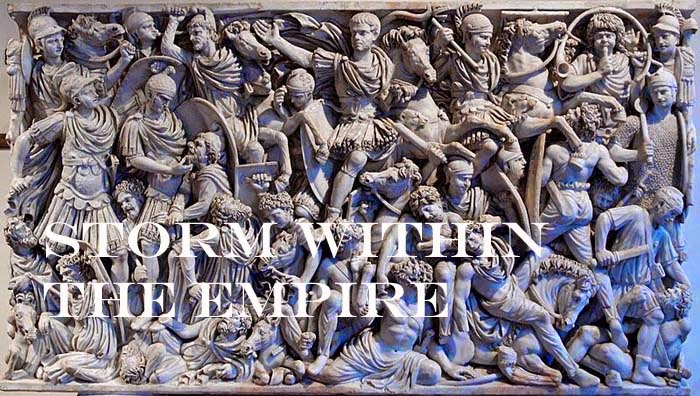Not all the people known
as Alani moved westward during the period of the great migration. Those Alani who
settled in the northern Caucuses sought a life as farmers and cattle herders,
nonetheless, in emergencies they could muster a cavalry force of nearly 30,000 according
to Arab sources. As early as 715 AD, the Umayyad invaded the Kingdom of the
Alani only to be repelled. Later invasions by the Umayyad and equally
unsuccessful, encountered the Khazar allied with the Alani.
Game one
Awaiting the arrival of
the Alani, the Umayyad positioned its infantry in centre with the bulk of its
cavalry deployed on the open right flank. Hills secured the left flank and here, archers supported by cavalry were placed. The approach of dust clouds finally settled revealing
the bulk of their army facing the Umayyad right flank forcing their general to revise his plans.
To meed the impending threat, the Umayyad general shifted his reserve
formations from its position on the left flank to the right. No sooner were the orders given the Alani were seen moving forward.
The situation on the Umayyad right becam desperate as new lines were adjusted to meet the Alani attack. In the maelstrom of charge and countrecharge of lancers and horse archers, the Umayyad subordinate general was severely wounded and carried off the field. A panic gripped the Umayyad right forcing the Umayyad commander no alternative but to call a retreat. Score 8 - 2
for the Alani.
Game two
With reinforcements, the
Umayyad continued their campaign north of the Caucuses and found the Alani
prepared for a fight. A light cavalry screen shielding their heavy lancers positioned
in a second line and meet the Alani deployment, Umayyad spearmen, supported by
archers formed the Umayyad centre with the bulk of the cavalry forming a
reserve. Smaller detachments of cavalry protected the extreme left and right
flank.
Umayyad infantry line right
wheeled so as to approach the enemy better and have the left less exposed to an
Alani flank attack. On the Umayyad right, Jund cavalry easily dispersed Alani
light horse but the threat on the left flank was now critical.
Moving relentlessly
forward, the Umayyad infantry drove the Alani light cavalry back and seized the
rough ground to threaten the Alani position. This forced the Alani to commit
their lancers to action.
Casualties fell heavily on
both sides, yet both commanders were determined to battle despite the cost. The
anticipated Alani attack on the enemy’s left flank however, could not gain
ground and pressure from the Umayyad right forced the Alani commander to call
for general retreat. Score 8 – 7 for the Umayyad.
Both armies are doubled in size as single commands (24 elements).
Umayyad
1 x general (Cv), 3 x Jund cavalry (Cv), 3 x spearmen
(Sp), 2 x archers (3Bw), 1 x archer (Ps), 2 x Bedouin and Ghazis light horse
(LH).
Alani
1 x general (3Kn), 3 x nobles (Kn), 7 x horse archers
(LH), 1 x camp follower archers (Ps).













